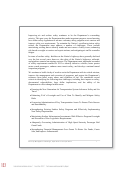Performance And Accountability Report - Fiscal Year 2013 - Federal Aviation Administration - U.s. Department Of Transportation Page 53
ADVERTISEMENT
 1
1  2
2  3
3  4
4  5
5  6
6  7
7  8
8  9
9  10
10  11
11  12
12  13
13  14
14  15
15  16
16  17
17  18
18  19
19  20
20  21
21  22
22  23
23  24
24  25
25  26
26  27
27  28
28  29
29  30
30  31
31  32
32  33
33  34
34  35
35  36
36  37
37  38
38  39
39  40
40  41
41  42
42  43
43  44
44  45
45  46
46  47
47  48
48  49
49  50
50  51
51  52
52  53
53  54
54  55
55  56
56  57
57  58
58  59
59  60
60  61
61  62
62  63
63  64
64  65
65  66
66  67
67  68
68  69
69  70
70  71
71  72
72  73
73  74
74  75
75  76
76  77
77  78
78  79
79  80
80  81
81  82
82  83
83  84
84  85
85  86
86  87
87  88
88  89
89  90
90  91
91  92
92  93
93  94
94  95
95  96
96  97
97  98
98  99
99  100
100  101
101  102
102  103
103  104
104  105
105  106
106  107
107  108
108  109
109  110
110  111
111  112
112  113
113  114
114  115
115  116
116  117
117  118
118  119
119  120
120  121
121  122
122  123
123  124
124  125
125  126
126  127
127  128
128  129
129  130
130  131
131  132
132  133
133  134
134  135
135  136
136  137
137  138
138  139
139  140
140  141
141  142
142  143
143  144
144  145
145  146
146  147
147  148
148  149
149  150
150 General Aviation (GA) Fatal Accident Rate
approximately 70 percent of all fatal GA accidents. In addition,
Reduce the GA fatal accident rate to no more than 1 fatal
human factors directly contribute to approximately 80 percent of
accident per 100,000 flight hours by 2018.
fatal GA accidents.
FY 2013
Reduce the GA fatal accident rate to no more than 1.057
Target
fatal accidents per 100,000 flight hours in FY 2013.
Many GA accidents occur in Alaska. More than three-quarters
FY 2013
1.061
of Alaska’s communities have no access to highways or roads
Result
(Preliminary estimate until final result becomes available in March
and depend upon GA for access to food, mail, jobs, schools,
2015.)
medical services, and travel. The state’s topography and extreme
Public
By tracking the rate of fatal accidents per flight hours, FAA
weather present unique safety challenges to pilots, resulting in a
Benefit
can more accurately pinpoint safety concerns or trends
relatively high number of accidents.
indicating potential safety risks.
This performance measure supports a DOT Agency Priority Goal.
In May of this year, FAA leadership met with leaders from the
GA community to agree on actions to enhance safety and reduce
While commercial aviation makes more headlines, GA is just
accidents. In the short term, the group agreed to raise awareness
as vital to the success of our nation’s aviation system. GA is
of the importance of basic airmanship and to promote a positive
made up of more than 300,000 aircraft, from amateur-built
safety culture. For the longer term, the FAA called upon the GA
aircraft, rotorcraft, and balloons, to highly sophisticated
community to install life-saving equipment in older airplanes,
turbojets (executive jets). Although the GA fatal accident rate
improve general aviation data, and improve airman certification
has remained relatively flat over the past five years, it remains
testing and training. To meet these goals, the general aviation
unacceptably high. This may explain the National Transportation
community and the FAA agreed to move forward as quickly as
Safety Board (NTSB) leaving “General Aviation Safety” on its
possible on three key initiatives:
“Most Wanted List” of advocacy priorities for another year.
Participate and invest in the FAA’s General Aviation Joint
¢
Steering Committee (GAJSC). Industry participation is key
Reducing the rate remains one of the FAA’s top priorities. In
to obtaining data for analysis, which it is hoped will lead
FY 2013, with a result of 1.061 fatal accidents per 100,000
to the development of voluntary safety enhancements.
flight hours, we did not achieve our goal. “Loss of control”
The FAA group uses a data-driven process modeled on
continues to be the leading cause of GA fatalities, accounting for
that of the highly successful Commercial Aviation Safety
Photo: FAA
51
|
|
Federal Aviation Administration
Fiscal Year 2013
Performance and Accountability Report
ADVERTISEMENT
0 votes
Related Articles
Related forms
Related Categories
Parent category: Business









